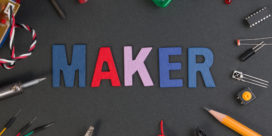Do students buy into maker culture?
Maker culture is going mainstream. The maker industry is projected to grow to more than $8 billion by 2020, and with the maker movement infiltrating classrooms, after-school clubs and homes, it’s no wonder.
But where is the maker movement strongest? A new report from robotics and open-source hardware provider DFRobot aims to find out by analyzing DIY-labeled products hosted on Kickstarter.
“The concept of ‘maker culture’ isn’t a new one, but it is starting to generate mainstream appeal through events like the Maker Faire series and crowdfunding platforms like Kickstarter,” said Ricky Ye, CEO of DFRobot. “It’s also infiltrating classroom learning models, with teachers implementing hands-on activities to facilitate student interest in STEM (science, technology, engineering and math) subjects. As today’s youth becomes more accustomed to building and designing on their own, it’s exciting to think of what ‘maker culture’ will look like in the next decade and beyond.”
Interestingly, despite the low number of solo female-founded projects, the majority of them (eighty-nine percent) were fully-funded, demonstrating a small, but effective group of female creators. Of the 38 percent of solo male-founded projects identified, 86 percent were fully-funded. Of company-posted projects, 93 percent were fully funded, suggesting that collaborative team-based products are the most appealing for consumers.
Hardware is one of the most popular types of maker products available on Kickstarter (24 percent of projects); 77 percent of the hardware products examined by DFRobot are from North America, likely because maker culture originated in the region and is continually encouraged through initiatives like the Obama administration’s Nation of Makers.
Twenty-one percent of Kickstarter projects are DIY electronics, but only 8 percent of Kickstarter projects involve robots and just 6 percent involve 3D printing. 3D printing ranks among the highest-funded maker projects, with each project receiving an average of $319,482. As context, robots receive only $73,500 on average. This major support of 3D printers may be due to the market’s growth projection of more than $32 billion by 2023.
